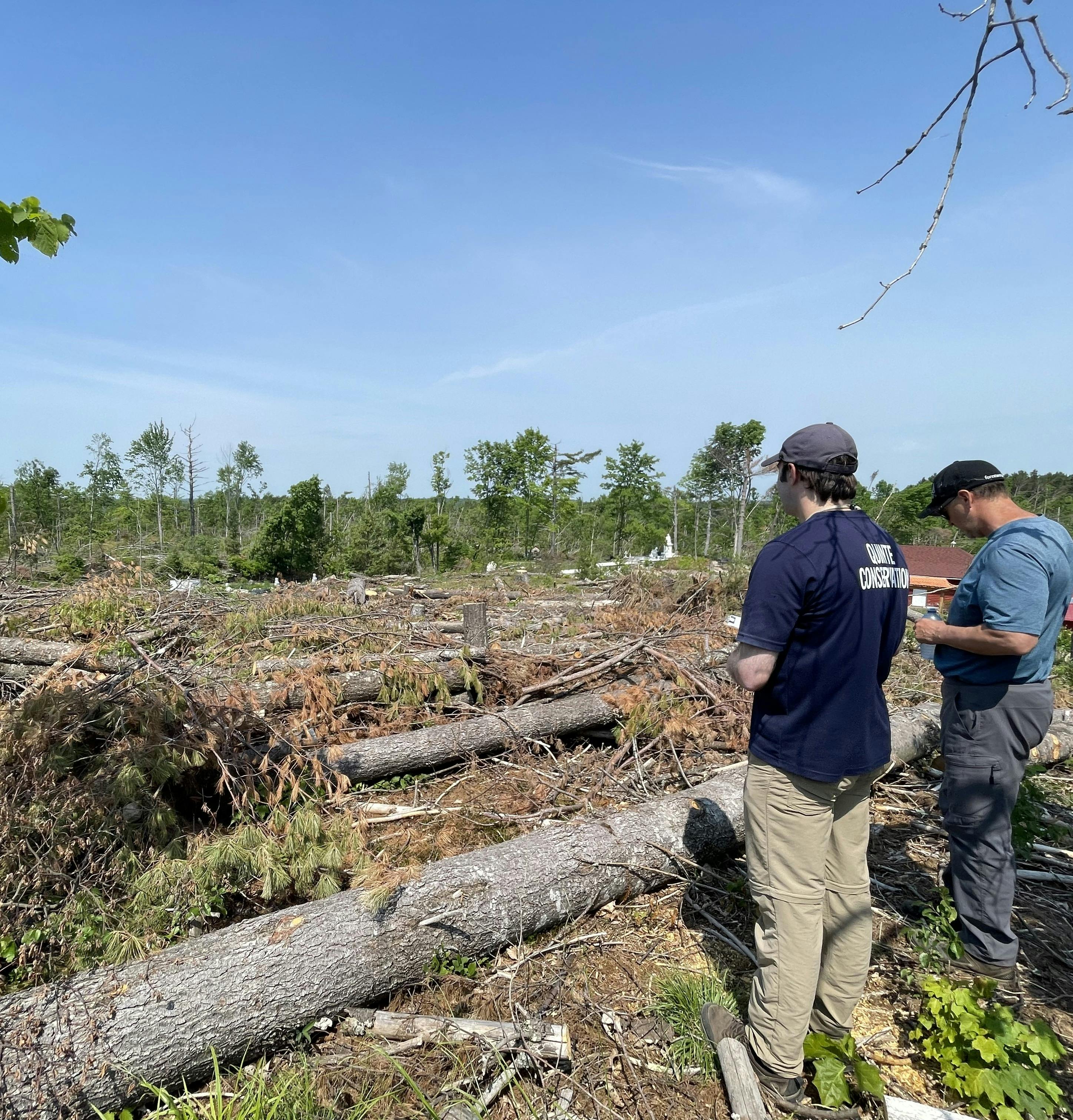Land and site selection
Sourcing project sites can be a challenge depending on how you are developing your tree planting program. You may already have land identified for a project underway and are looking for funding to implement it, or you have a program or project in the planning stages and are looking for suitable sites to support your program goals. Either way, it is important to understand that every site has a different history, and so your objectives, appropriate species, site preparation and even long-term maintenance will stem from the first site visit that you carry out.
Your project will have a higher success rate if your site visit is comprehensive, where each step is described in detail early in the planning stages. Your tending and maintenance plan will rely substantially on the species and stock type you decide to plant, which are determined directly from the information collected in your site visit. It is also important that you evaluate whether the site you’re visiting is suitable for planting trees, keeping in mind that not every site is suitable for tree planting (Brancalion and Holl, 2020)[1].
Disturbance type
All forests were created from some form of disturbance and a moderate amount of disturbance is what keeps forests in a healthy dynamic state (see the intermediate disturbance hypothesis, Connell (1978)[2]. Forest disturbance varies across Canada, with insect damage and wildfire making up the majority. Other disturbance types include windstorms, flooding, ice storms, and drought. Often, you will see more than one disturbance in any given forest. For beginner project managers, it is recommended to acquire a basic working knowledge of forest ecology before beginning any tree planting operation. Knowing the basics about forest establishment, tree competition, stand dynamics and succession, tree growth and overall forest ecology will only serve to enhance the success rate of your project.

Afforestation project in Wakefield, Quebec

Forest restoration project in Tweed, Ontario following a tornado
Landowner Relationship
The level of involvement and role of the landowner/land manager will vary across tree planting projects in Canada. For public land, you typically have a license holder, Indigenous/traditional rights holder, district manager, or an equivalent who will be responsible for managing the growing forest. On municipal land you will have city staff caring for the growing forest. For provincial and national parks, you will have government foresters manage the newly planted forest. On private or Indigenous land, you will be working with a person, family or group who could have a wide range of possible perspectives, set of objectives and level of participation than land managers of public land, which tends to be more standardized. This section mostly focuses on cultivating a relationship with a private landowner for this reason.
Each landowner is different in terms of their personal objectives for their property, their capabilities, skills, experience, and long-term plans. It cannot be overstated how important it is to communicate in depth with the landowner ahead of planning out the project. There may be legal considerations, expectations to clarify and opportunities to identify through conversations with them. These are just some examples of things you should ask your landowner details on as early as possible in the project planning stage:
The legal ownership status and plans for continued ownership
History and past land use of the site
A list of all current and planned activities taking place on the property (e.g. crop production, vegetable gardening, livestock, wind turbines, solar panels, recreation, development, etc.)
Any other agreements or partnerships active on the property
The short-term and long-term objectives for their property as a whole
The short-term and long-term objectives for the trees and forest once established
The tree species they request to include in the planting plan
Their capabilities and plans for long-term maintenance of the trees and forest
Site Plan/Planting Prescription
Your site plan/planting plan will include all the details about the site and project. It will include a planting prescription for what species to include and how to plant them, including all field work for site preparation, planting labour, tending, and monitoring. Here are some elements to include in your tree planting plan:
Site mailing address
Level of downed woody debris
Project objectives
Site preparation plans
Access notes and instructions
Stock information
Land use history
Planting method (hand, machine, etc.)
Topography
Spacing between trees and rows
Soil measurements
Tending plans
Drainage and hydrology
Project cost breakdown
Woody and non-woody competition
Seasonal Timing
You will need to plan ahead for the seasonal timing to plant your trees for the greatest success of your project. The season you decide to plant your trees in depends on nursery stock and your staffing capacity, but if your nursery is flexible on seasonal timing for your planting and you have the staffing, the most influential site-based factors are soil texture (clay soils will heave after freezing), temperature and water availability. Trees planted in the spring will benefit from water availability from snowmelt and will be planted at the time of year when the trees are most focused on aboveground leaf growth and photosynthetic processes will accelerate. On the contrary, trees planted in the fall will benefit from cooler temperatures and the tree’s energetic allocation will be focused more on the belowground structures like the fine and coarse root structures as the leaves start to senesce and fall to the ground. As long as you have a 6-week window after planting with warm soils for roots to establish into the new site, fall planting can be just as successful as spring. Summer plantings can also take place in certain sites, but the nursery must be providing you with hotlifted stock and also plan for water availability on-site during and after planting if possible.
Literature Cited
Brancalion, P.H.S. and Holl, K.D. 2020. Guidance for successful tree planting initiatives. Journal of Applied Ecology. 57,2349–2361. DOI: 10.1111/1365-2664.13725.
Connell, J. H. 1978. Diversity in tropical rain forests and coral reefs. Science 199, 1302-1310.
